Ambient
Showing 107751–107800 of 153674 results
-
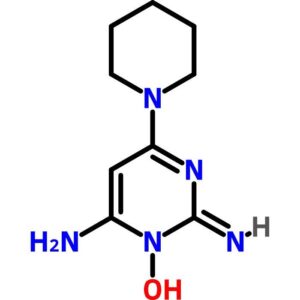
Minoxidil
$116.07 Add to cart View Product DetailsMinoxidil
-
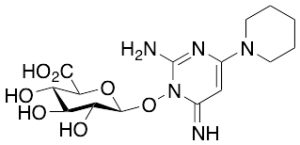
Minoxidil Beta-D-Glucuronide
$94.01 Add to cart View Product DetailsMolecular Formula : C15 H23 N5 O7
-

Minoxidil Beta-D-Glucuronide
$156.98 Add to cart View Product DetailsMolecular Formula : C15 H23 N5 O7
-

Minoxidil Beta-D-Glucuronide
$280.31 Add to cart View Product DetailsMolecular Formula : C15 H23 N5 O7
-
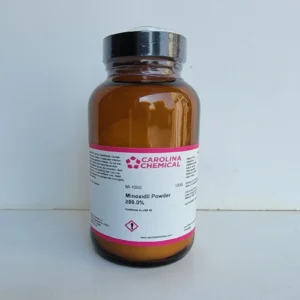
Minoxidil Powder ≥99.0% – 100G
$91.08 Add to cart View Product DetailsCAS Number 38304-91-5 Molecular Formula C9H15N5O Molecular Weight 209.25 -
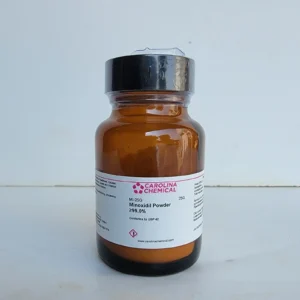
Minoxidil Powder ≥99.0% – 25G
$36.80 Add to cart View Product DetailsCAS Number 38304-91-5 Molecular Formula C9H15N5O Molecular Weight 209.25 -

Minoxidil Powder ≥99.0% – 500G
$427.80 Add to cart View Product DetailsCAS Number 38304-91-5 Molecular Formula C9H15N5O Molecular Weight 209.25 -
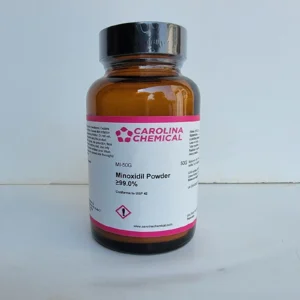
Minoxidil Powder ≥99.0% – 50G
$59.80 Add to cart View Product DetailsCAS Number 38304-91-5 Molecular Formula C9H15N5O Molecular Weight 209.25 -
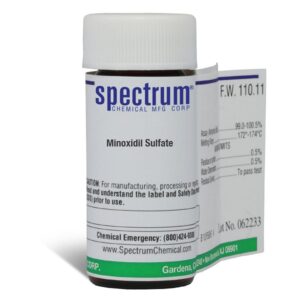
Minoxidil Sulfate
$237.38 Add to cart View Product DetailsMinoxidil Sulfate
-
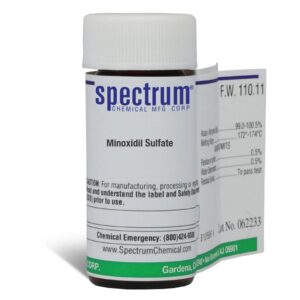
Minoxidil Sulfate
$915.09 Add to cart View Product DetailsMinoxidil Sulfate
-
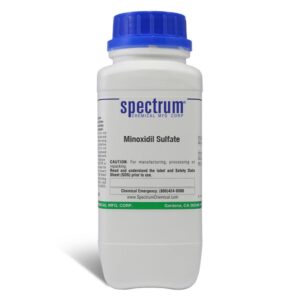
Minoxidil Sulfate
$5,125.47 Add to cart View Product DetailsMinoxidil Sulfate
-
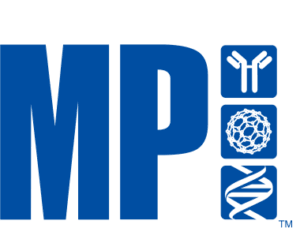
MINOXIDIL SULFATE
$54.11 Add to cart View Product DetailsMINOXIDIL SULFATE
-

MINOXIDIL SULFATE
$283.89 Add to cart View Product DetailsMINOXIDIL SULFATE
-

Minoxidil Sulfate
$121.61 Add to cart View Product DetailsMolecular Formula : C9 H15 N5 O4 S
-

Minoxidil Sulfate
$146.63 Add to cart View Product DetailsMolecular Formula : C9 H15 N5 O4 S
-

Minoxidil Sulfate
$169.05 Add to cart View Product DetailsMolecular Formula : C9 H15 N5 O4 S
-
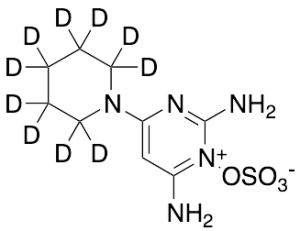
Minoxidil Sulfate-d10
$176.81 Add to cart View Product DetailsMolecular Formula : C9H5D10N5O4S
-

Minoxidil Sulfate-d10
$1,389.49 Add to cart View Product DetailsMolecular Formula : C9H5D10N5O4S
-
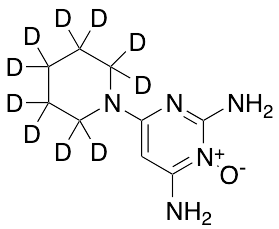
Minoxidil-d10
$177.68 Add to cart View Product DetailsMolecular Formula : C9 2H10 H5 N5 O
-

Minoxidil-d10
$530.44 Add to cart View Product DetailsMolecular Formula : C9 2H10 H5 N5 O
-

Minoxidil-d10
$1,052.25 Add to cart View Product DetailsMolecular Formula : C9 2H10 H5 N5 O
-
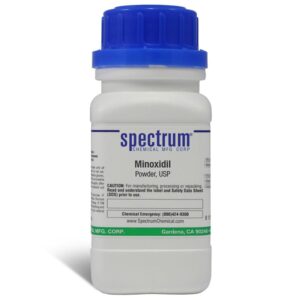
Minoxidil, Powder, USP
$89.04 Add to cart View Product DetailsMinoxidil, Powder, USP
-
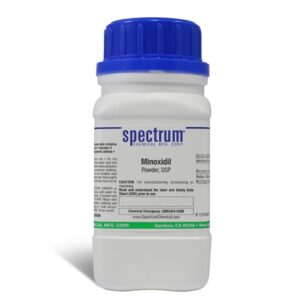
Minoxidil, Powder, USP
$264.32 Add to cart View Product DetailsMinoxidil, Powder, USP
-
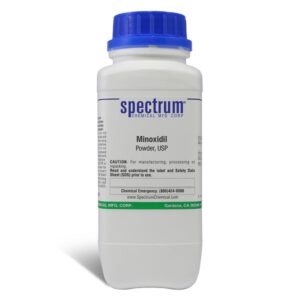
Minoxidil, Powder, USP
$673.50 Add to cart View Product DetailsMinoxidil, Powder, USP
-
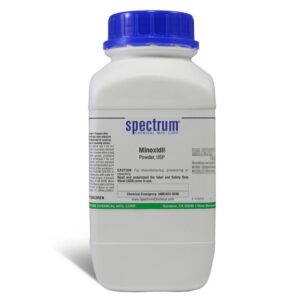
Minoxidil, Powder, USP
$1,217.78 Add to cart View Product DetailsMinoxidil, Powder, USP
-

Minoxidil, Powder, USP
$3,851.75 Add to cart View Product DetailsMinoxidil, Powder, USP
-
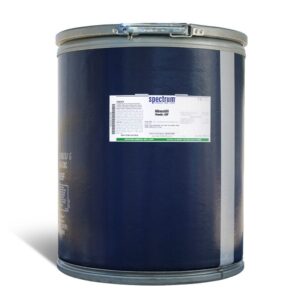
Minoxidil, Powder, USP
$8,721.95 Add to cart View Product DetailsMinoxidil, Powder, USP
-
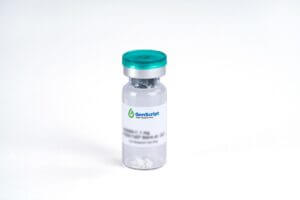
MIP-1α/CCL3, Human
$2,238.19 Add to cart View Product DetailsHuman Chemokine (C-C Motif) Ligand 3 (CCL3) is a small cytokine belonging to the CC chemokine family. CCL3 is primarily expressed in T cells, B cells, and monocytes after antigen or mitogen stimulation. CCL3 exhibits chemoattractive and adhesive effects on lymphocytes. CCL3 exerts multiple effects on hematopoietic precursor cells and inhibits the proliferation of hematopoietic stem cells in vitro as well as in vivo. CCR1 and CCR5 have been identified as functional receptors for CCL3.
-
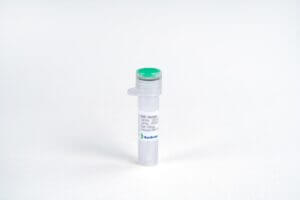
MIP-1α/CCL3, Human
$452.81 Add to cart View Product DetailsHuman Chemokine (C-C Motif) Ligand 3 (CCL3) is a small cytokine belonging to the CC chemokine family. CCL3 is primarily expressed in T cells, B cells, and monocytes after antigen or mitogen stimulation. CCL3 exhibits chemoattractive and adhesive effects on lymphocytes. CCL3 exerts multiple effects on hematopoietic precursor cells and inhibits the proliferation of hematopoietic stem cells in vitro as well as in vivo. CCR1 and CCR5 have been identified as functional receptors for CCL3.
-

MIP-1α/CCL3, Mouse
$99.19 Add to cart View Product DetailsMIP-1 Alpha, also known as CCL3, G0S19-1 and SCYA3, LD78 alpha, is an inflammatory chemokine. MIP-1α belongs to the CCL chemokine family, and shares 68% homology with MIP-1β. The mature form of MIP-1α contains 69 amino acids, exists as dimers in solution, and tends to undergo reversible aggregation. It binds to CCR1, CCR4 and CCR5, and participates in the host response to invading pathogens by regulating the trafficking and activation of inflammatory cells, such as macrophages, lymphocytes, NK cells and dendritic cells. MIP-1 alpha polymorphisms are associated with HIV susceptibility or resistance. Recombinant MIP-1 alpha induces a dose-dependent inhibition of HIV and SIV infection. Upon stimulation by endogenous and exogenous agents such as Interleukin-1β, Interferon-γ, and lipoteichoic acid from gram-positive bacteria, monocytes are able to secrete significant amounts of MIP-1α. MIP-1α augments the adhesions of T lymphocytes, monocytes, and neutrophils to vascular cell adhesion molecule 1. Additionally, in wounds, MIP-1α chemoattracts macrophages in order to accelerate the tissue repair process.
-

MIP-1α/CCL3, Mouse
$58.65 Add to cart View Product DetailsMIP-1 Alpha, also known as CCL3, G0S19-1 and SCYA3, LD78 alpha, is an inflammatory chemokine. MIP-1α belongs to the CCL chemokine family, and shares 68% homology with MIP-1β. The mature form of MIP-1α contains 69 amino acids, exists as dimers in solution, and tends to undergo reversible aggregation. It binds to CCR1, CCR4 and CCR5, and participates in the host response to invading pathogens by regulating the trafficking and activation of inflammatory cells, such as macrophages, lymphocytes, NK cells and dendritic cells. MIP-1 alpha polymorphisms are associated with HIV susceptibility or resistance. Recombinant MIP-1 alpha induces a dose-dependent inhibition of HIV and SIV infection. Upon stimulation by endogenous and exogenous agents such as Interleukin-1β, Interferon-γ, and lipoteichoic acid from gram-positive bacteria, monocytes are able to secrete significant amounts of MIP-1α. MIP-1α augments the adhesions of T lymphocytes, monocytes, and neutrophils to vascular cell adhesion molecule 1. Additionally, in wounds, MIP-1α chemoattracts macrophages in order to accelerate the tissue repair process.
-
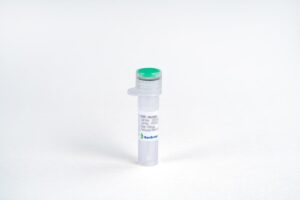
MIP-2/CXCL2, Mouse
$1,323.94 Add to cart View Product DetailsChemokine (C-X-C motif) ligand 2 (CXCL2) is a small cytokine belonging to the CXC chemokine family that is also referred to as macrophage inflammatory protein 2-alpha (MIP2-alpha), Growth-regulated protein beta (Gro-beta) and Gro oncogene-2 (Gro-2). CXCL2 is secreted by monocytes and macrophages and is chemotactic for polymorphonuclear leukocytes and hematopoietic stem cells. CXCL2’s amino acid sequence is 90% identical to the amino acid sequence of related chemokine, CXCL1. CXCL2 signals through the CXCR2 receptor.
-

MIP-2/CXCL2, Mouse
$99.19 Add to cart View Product DetailsChemokine (C-X-C motif) ligand 2 (CXCL2) is a small cytokine belonging to the CXC chemokine family that is also referred to as macrophage inflammatory protein 2-alpha (MIP2-alpha), Growth-regulated protein beta (Gro-beta) and Gro oncogene-2 (Gro-2). CXCL2 is secreted by monocytes and macrophages and is chemotactic for polymorphonuclear leukocytes and hematopoietic stem cells. CXCL2’s amino acid sequence is 90% identical to the amino acid sequence of related chemokine, CXCL1. CXCL2 signals through the CXCR2 receptor.
-

MIP-2/CXCL2, Mouse
$43.13 Add to cart View Product DetailsChemokine (C-X-C motif) ligand 2 (CXCL2) is a small cytokine belonging to the CXC chemokine family that is also referred to as macrophage inflammatory protein 2-alpha (MIP2-alpha), Growth-regulated protein beta (Gro-beta) and Gro oncogene-2 (Gro-2). CXCL2 is secreted by monocytes and macrophages and is chemotactic for polymorphonuclear leukocytes and hematopoietic stem cells. CXCL2’s amino acid sequence is 90% identical to the amino acid sequence of related chemokine, CXCL1. CXCL2 signals through the CXCR2 receptor.
-

MIP-3α/CCL20, Human
$1,323.94 Add to cart View Product DetailsMacrophage Inflammatory Protein-3 (MIP-3α), also known as chemokine (C-C motif) ligand 20 (CCL20) or liver activation regulated chemokine (LARC), is a small cytokine belonging to the CC chemokine family. MIP-3α is expressed in the liver, lymph nodes, appendix, PBL and lung and can signal through the CCR6 receptor. It is strongly chemotactic for lymphocytes and weakly attracts neutrophils. MIP-3α is implicated in the formation and function of mucosal lymphoid tissues via chemoattraction of lymphocytes and dendritic cells toward the epithelial cells surrounding these tissues. Additionally, it promotes the adhesion of memory CD4+ T cells and inhibits colony formation of bone marrow myeloid immature progenitors.
-

MIP-3α/CCL20, Human
$99.19 Add to cart View Product DetailsMacrophage Inflammatory Protein-3 (MIP-3α), also known as chemokine (C-C motif) ligand 20 (CCL20) or liver activation regulated chemokine (LARC), is a small cytokine belonging to the CC chemokine family. MIP-3α is expressed in the liver, lymph nodes, appendix, PBL and lung and can signal through the CCR6 receptor. It is strongly chemotactic for lymphocytes and weakly attracts neutrophils. MIP-3α is implicated in the formation and function of mucosal lymphoid tissues via chemoattraction of lymphocytes and dendritic cells toward the epithelial cells surrounding these tissues. Additionally, it promotes the adhesion of memory CD4+ T cells and inhibits colony formation of bone marrow myeloid immature progenitors.
-

MIP-3α/CCL20, Human
$43.13 Add to cart View Product DetailsMacrophage Inflammatory Protein-3 (MIP-3α), also known as chemokine (C-C motif) ligand 20 (CCL20) or liver activation regulated chemokine (LARC), is a small cytokine belonging to the CC chemokine family. MIP-3α is expressed in the liver, lymph nodes, appendix, PBL and lung and can signal through the CCR6 receptor. It is strongly chemotactic for lymphocytes and weakly attracts neutrophils. MIP-3α is implicated in the formation and function of mucosal lymphoid tissues via chemoattraction of lymphocytes and dendritic cells toward the epithelial cells surrounding these tissues. Additionally, it promotes the adhesion of memory CD4+ T cells and inhibits colony formation of bone marrow myeloid immature progenitors.
-

MIP-3α/CCL20, Human(CHO-expressed)
$1,177.31 Add to cart View Product DetailsMacrophage Inflammatory Protein-3 (MIP-3α), also known as chemokine (C-C motif) ligand 20 (CCL20) or liver activation regulated chemokine (LARC), is a small cytokine belonging to the CC chemokine family. MIP-3α is expressed in the liver, lymph nodes, appendix, PBL and lung and can signal through the CCR6 receptor. It is strongly chemotactic for lymphocytes and weakly attracts neutrophils. MIP-3α is implicated in the formation and function of mucosal lymphoid tissues via chemoattraction of lymphocytes and dendritic cells toward the epithelial cells surrounding these tissues. Additionally, it promotes the adhesion of memory CD4+ T cells and inhibits colony formation of bone marrow myeloid immature progenitors.
-

MIP-3α/CCL20, Human(CHO-expressed)
$86.25 Add to cart View Product DetailsMacrophage Inflammatory Protein-3 (MIP-3α), also known as chemokine (C-C motif) ligand 20 (CCL20) or liver activation regulated chemokine (LARC), is a small cytokine belonging to the CC chemokine family. MIP-3α is expressed in the liver, lymph nodes, appendix, PBL and lung and can signal through the CCR6 receptor. It is strongly chemotactic for lymphocytes and weakly attracts neutrophils. MIP-3α is implicated in the formation and function of mucosal lymphoid tissues via chemoattraction of lymphocytes and dendritic cells toward the epithelial cells surrounding these tissues. Additionally, it promotes the adhesion of memory CD4+ T cells and inhibits colony formation of bone marrow myeloid immature progenitors.
-

MIP-3α/CCL20, Human(CHO-expressed)
$43.13 Add to cart View Product DetailsMacrophage Inflammatory Protein-3 (MIP-3α), also known as chemokine (C-C motif) ligand 20 (CCL20) or liver activation regulated chemokine (LARC), is a small cytokine belonging to the CC chemokine family. MIP-3α is expressed in the liver, lymph nodes, appendix, PBL and lung and can signal through the CCR6 receptor. It is strongly chemotactic for lymphocytes and weakly attracts neutrophils. MIP-3α is implicated in the formation and function of mucosal lymphoid tissues via chemoattraction of lymphocytes and dendritic cells toward the epithelial cells surrounding these tissues. Additionally, it promotes the adhesion of memory CD4+ T cells and inhibits colony formation of bone marrow myeloid immature progenitors.
-

MIP-3α/CCL20, Mouse
$2,264.06 Add to cart View Product DetailsMacrophage Inflammatory Protein-3 (MIP-3α), also known as chemokine (C-C motif) ligand 20 (CCL20) or liver activation regulated chemokine (LARC), is a small cytokine belonging to the CC chemokine family. MIP-3α is expressed in the liver, lymph nodes, appendix, PBL and lung and can signal through the CCR6 receptor. It is strongly chemotactic for lymphocytes and weakly attracts neutrophils. MIP-3α is implicated in the formation and function of mucosal lymphoid tissues via chemoattraction of lymphocytes and dendritic cells toward the epithelial cells surrounding these tissues. Additionally, it promotes the adhesion of memory CD4+ T cells and inhibits colony formation of bone marrow myeloid immature progenitors.
-

MIP-3α/CCL20, Mouse
$155.25 Add to cart View Product DetailsMacrophage Inflammatory Protein-3 (MIP-3α), also known as chemokine (C-C motif) ligand 20 (CCL20) or liver activation regulated chemokine (LARC), is a small cytokine belonging to the CC chemokine family. MIP-3α is expressed in the liver, lymph nodes, appendix, PBL and lung and can signal through the CCR6 receptor. It is strongly chemotactic for lymphocytes and weakly attracts neutrophils. MIP-3α is implicated in the formation and function of mucosal lymphoid tissues via chemoattraction of lymphocytes and dendritic cells toward the epithelial cells surrounding these tissues. Additionally, it promotes the adhesion of memory CD4+ T cells and inhibits colony formation of bone marrow myeloid immature progenitors.
-

MIP-3α/CCL20, Mouse
$68.14 Add to cart View Product DetailsMacrophage Inflammatory Protein-3 (MIP-3α), also known as chemokine (C-C motif) ligand 20 (CCL20) or liver activation regulated chemokine (LARC), is a small cytokine belonging to the CC chemokine family. MIP-3α is expressed in the liver, lymph nodes, appendix, PBL and lung and can signal through the CCR6 receptor. It is strongly chemotactic for lymphocytes and weakly attracts neutrophils. MIP-3α is implicated in the formation and function of mucosal lymphoid tissues via chemoattraction of lymphocytes and dendritic cells toward the epithelial cells surrounding these tissues. Additionally, it promotes the adhesion of memory CD4+ T cells and inhibits colony formation of bone marrow myeloid immature progenitors.
-

MIP-4/CCL18, Human
$2,018.25 Add to cart View Product DetailsCCL18, is a novel CC chemokine that is highly homologous to MIP-1α (61% amino acid sequence identity). CCL18 cDNA encodes an 89 aa residue precursor protein with a 20 aa putative signal peptide that is cleaved to generate a 69 aa residue mature protein which lacks potential glycosylation sites. In vitro, CCL18 mRNA expression is induced in alternatively activated macrophages by Th2 cytokines such as IL-4, IL-10 and IL-13, and inhibited by IFN-γ. CCL18 mRNA is also expressed by GM-CSF/IL-4-induced monocyte-derived dendritic cells. In vivo, CCL18 is highly expressed in lung and placenta but is not expressed in epidermal Langerhans cells. Recombinant CCL18 has been shown to chemoattract naive T cells, but not monocytes or neutrophils.
-

MIP-4/CCL18, Human
$155.25 Add to cart View Product DetailsCCL18, is a novel CC chemokine that is highly homologous to MIP-1α (61% amino acid sequence identity). CCL18 cDNA encodes an 89 aa residue precursor protein with a 20 aa putative signal peptide that is cleaved to generate a 69 aa residue mature protein which lacks potential glycosylation sites. In vitro, CCL18 mRNA expression is induced in alternatively activated macrophages by Th2 cytokines such as IL-4, IL-10 and IL-13, and inhibited by IFN-γ. CCL18 mRNA is also expressed by GM-CSF/IL-4-induced monocyte-derived dendritic cells. In vivo, CCL18 is highly expressed in lung and placenta but is not expressed in epidermal Langerhans cells. Recombinant CCL18 has been shown to chemoattract naive T cells, but not monocytes or neutrophils.
-
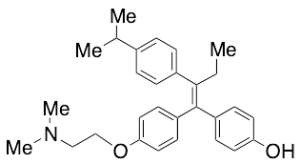
Miproxifene
$176.81 Add to cart View Product DetailsMolecular Formula : C29H35NO2
-

Miproxifene
$1,389.49 Add to cart View Product DetailsMolecular Formula : C29H35NO2
-

Mirabegron
$61.24 Add to cart View Product DetailsMolecular Formula : C21 H24 N4 O2 S
-

Mirabegron
$144.90 Add to cart View Product DetailsMolecular Formula : C21 H24 N4 O2 S
-

Mirabegron
$170.78 Add to cart View Product DetailsMolecular Formula : C21 H24 N4 O2 S






